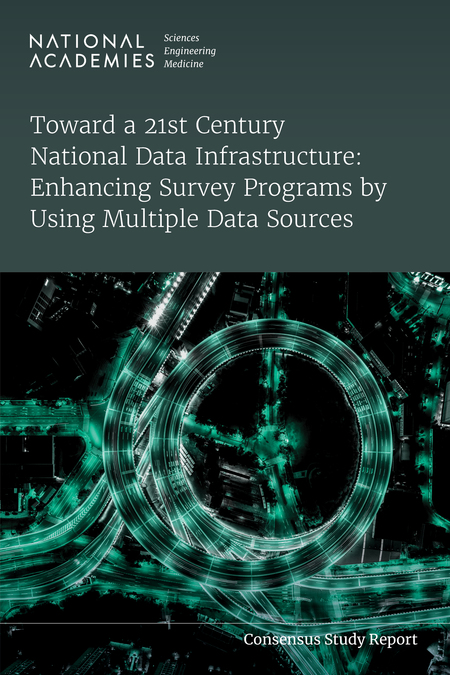
Much of the statistical information currently produced by federal statistical agencies - information about economic, social, and physical well-being that is essential for the functioning of modern society - comes from sample surveys. In recent years, there has been a proliferation of data from other sources, including data collected by government agencies while administering programs, satellite and sensor data, private-sector data such as electronic health records and credit card transaction data, and massive amounts of data available on the internet. How can these data sources be used to enhance the information currently collected on surveys, and to provide new frontiers for producing information and statistics to benefit American society?
Toward a 21st Century National Data Infrastructure: Enhancing Survey Programs by Using Multiple Data Sources, the second report in a series funded by the National Science Foundation, discusses how use of multiple data sources can improve the quality of national and subnational statistics while promoting data equity. This report explores implications of combining survey data with other data sources through examples relating to the areas of income, health, crime, and agriculture.
Access the Report
Contributor(s): National Academies of Sciences, Engineering, and Medicine; Division of Behavioral and Social Sciences and Education; Committee on National Statistics; Panel on the Implications of Using Multiple Data Sources for Major Survey Programs; Sharon L. Lohr, Daniel H. Weinberg, and Krisztina Marton, Editors